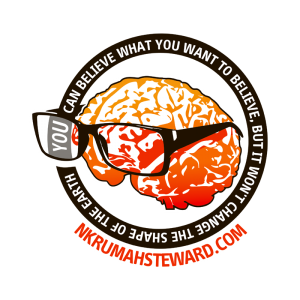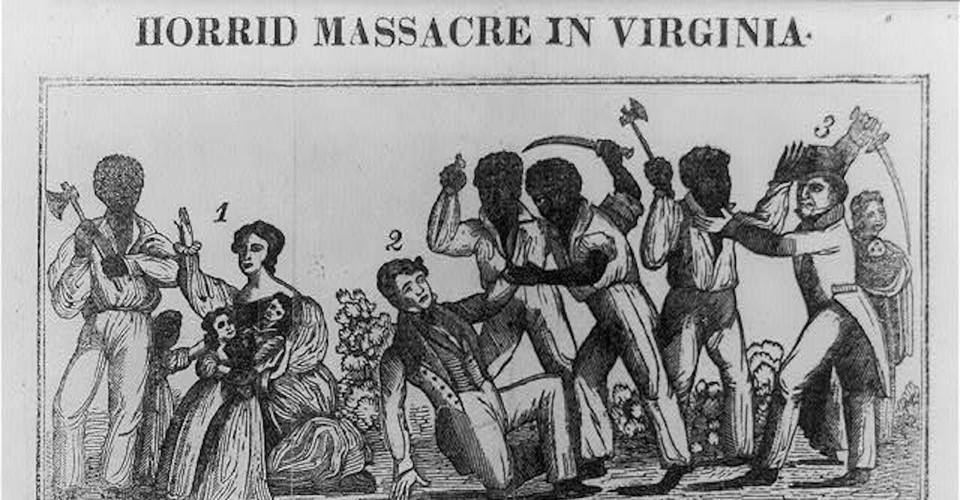We are on a plantation owned by a man named Benjamin Turner, and on this plantation is a young enslaved African named Nat that is being Christianized.
Nat’s father had escaped north when Nat was still a young boy. His grandmother, a woman named “Old Bridget”, looked after Nat.
The two of them were very close. Old Bridget was one of those older slaves that the Baptists didn’t bother to try to convert. Old Bridget was a rarity in America in that she was “free born”, stolen from Africa when she was 13.
She remembered her homeland.
She remembered her parents, her village, her cousins, and her old way of life.
Her life before slavery.
At a very young age Nat was described as having a “natural intelligence and quickness of apprehension, surpassed by few.” He had learned how to read and write at his Baptist church at a very young age. Nat had a reputation around the plantation for being deeply religious, almost fanatical. He was often seen fasting, praying, or immersed in reading the stories of the Bible.
As a teenager Nat began to have visions. And being a deeply religious person he interpreted these visions as being messages from God. These visions were so vivid and so visceral to him that at 22 he actually ran away from his owner and hid for a month but then returned to him under his own free will after having one such vision that commanded him to. At 22, Nat began conducting Baptist services at the slave chapel where he was quickly given the name “The Prophet” by the congregation. The visions continued. By the age of 28 he had become convinced that he “was ordained for some great purpose in the hands of the Almighty.”
He just didn’t know what God wanted him to do. He did however have complete faith that God would show him.
And show him he did. While working the fields on May 12, 1828 Nat had a vision.
“I heard a loud noise in the heavens, and the Spirit instantly appeared to me and said the Serpent was loosened, and Christ had laid down the yoke he had borne for the sins of men, and that I should take it on and fight against the Serpent, for the time was fast approaching when the first should be last and the last should be first.”
Nat believed that this was the message from God that he had been waiting for.
He was being asked by God to fight against the serpent.
And the consequences of what he would do three years later would be carried by every single Black, free or otherwise, in America for decades to come. For Nat would orchestrate and execute the most horrifying slave rebellion America had ever seen.
Nat confided in only four of his fellow slaves, Henry, Hank, Nelson and Sam, with whom he had the utmost confidence and told them of his plan to kill the Devil’s people with their own weapons.
On February 11, 1831, there was a solar eclipse that was visible in Virginia where he lived. Nat interpreted this eclipse as “a black man’s hand reaching over the sun” and as a sign that it was time to act on his mission.
At first, he had planned the rebellion for the 4th of July but decided at the last minute to postpone it for more planning. But then on August 13 1831 there was yet another solar eclipse, but this time the Sun appeared to be bluish-green, possibly because of material that had been placed into the atmosphere by an eruption of Mount Saint Helens on the other side of the country. Nat interpreted this as the final sign and a week later, on August 21, 1831, he began.
There were no George Wilsons or Joe LaRoches to worry about this time because Nat only shared his plans with slaves that he knew personally and fully trusted. If you forgot, George Wilson and Joe LaRoche were the two house slaves who were fiercely loyal to their masters in South Carolina that they exposed Denmark Vesey’s conspiracy before it ever got off the ground.
Nat also didn’t talk about his plans in the open, he and his friends used songs to communicate messages to each other so that no one, not even his fellow slaves could ever say that they overheard the plot directly. No, when this rebellion would begin it would catch the George Wilsons and Joe LaRoches just as much by surprise as it would everyone else.
Nat and his companions chose to forego the use of firearms because the sound that they would make would attract too much attention. Instead they decided to use knives, hatchets, axes and blunt instruments. The night of August 21, 1831 Nat and his companions began travelling from house to house, freeing slaves and killing whatever white people they found in their beds as they slept and they didn’t discriminate by age or sex. Old people, young people, men, women, even children, it made no difference to them. Nat himself confessed to killing a woman named Margret Whitehead by crushing her skull with a fence post.
It didn’t take long before Nat and his 4 friends had grown to 70 and with every home they went to they took more weapons. Before long they were armed to the teeth.
Before Virginia was able to assemble a militia large enough to respond to this rebellion, Nat and his group had killed 60 men, women and children.
Nat even killed a man who he said, and I quote, “was to me a kind master.”
Interestingly enough, there was one group that Nat did spare and that group was poor whites who did not own slaves because Nat believed that poor whites thought no better of themselves than did Negros.
It must be pointed out that Nat was under no delusions of grandeur. Nat knew he was going to die. He was not like Vesey who had intended to take ships and sail to Haiti to live in freedom.
He wasn’t doing this for his own freedom. In fact, he had no designs other than to kill as many white slave owners as he could.
The point of his rebellion was to bring attention to the inherent brutality of owning human beings as property. Nat’s mission was clear…he wanted to spread “terror and alarm” among white slave owners.
And to that aim Nat Turner was wildly successful, because overnight he became quite literally the most haunting figure in the southern imagination.
Although the rebellion was suppressed within two days, Nat eluded capture for almost 2 months by hiding in the woods until October 30, when he was finally discovered by a farmer, hiding in a hole covered with fence rails.
After Turner was captured it was white’s turn. Once whites knew the rebellion had been suppressed, whites themselves then went on a killing spree of their own murdering hundreds of free blacks in the surrounding areas and sticking their severed heads along the roadside on signposts as a warning to other blacks. They didn’t murder enslaved Africans because those belonged to someone and had they done that they would’ve been held accountable in a court of law for destroying someone’s property. Free Blacks however were fair game.
At his trial Nat Turner pleaded not guilty because he said, “he did not feel so.”
Six days later Nat Turner was hanged and dismembered, his body parts were distributed to the family of the victims.
All in all 45 slaves were tried, 15 were acquitted, 30 were convicted, 18 were hanged, and 12 were sold out of state to be someone else’s problem.
Although Nat Turner’s rebellion didn’t free a single slave what it did was stir up the deepest fear of the southern Aristocracy, that the very people who watch over them, prepare their meals, and watch over their children and work their fields could at any moment rise up and slaughter them while they slept. As if it wasn’t bad enough that enslaved Africans vastly outnumbered them, now they had this to worry about.
The fact that Nat was a devout Christian, and that Nat’s owners treated him better than most, only made them more frightened because many of them sincerely believed what they had heard for centuries, and that was that slaves were too docile and content to ever harm them.
After Nat Turner’s revolt southern states across the board quickly enacted laws that would not be removed from the books until the conclusion of the American Civil War. Whites tightened slave codes, they expressly forbid blacks from learning how to read or write, even from preaching. They even barred blacks from gathering in groups without having a white person present. Free Blacks were no longer allowed to own guns and it became illegal for anyone, white or black, to speak out against slavery. Pro-slavery conservatives also grew more aggressive in their pro-slavery stances and started calling slavery a “positive good” instead of, as they had said for years defending slavery, a “necessary evil”.
So, in a way Nat Turner only managed to accomplish the exact opposite of what he had hoped.
Or did he?

